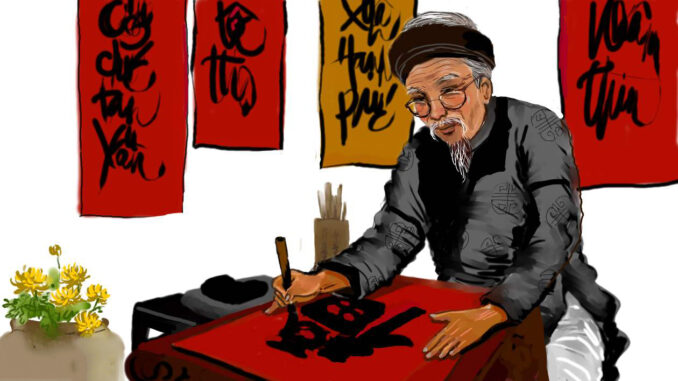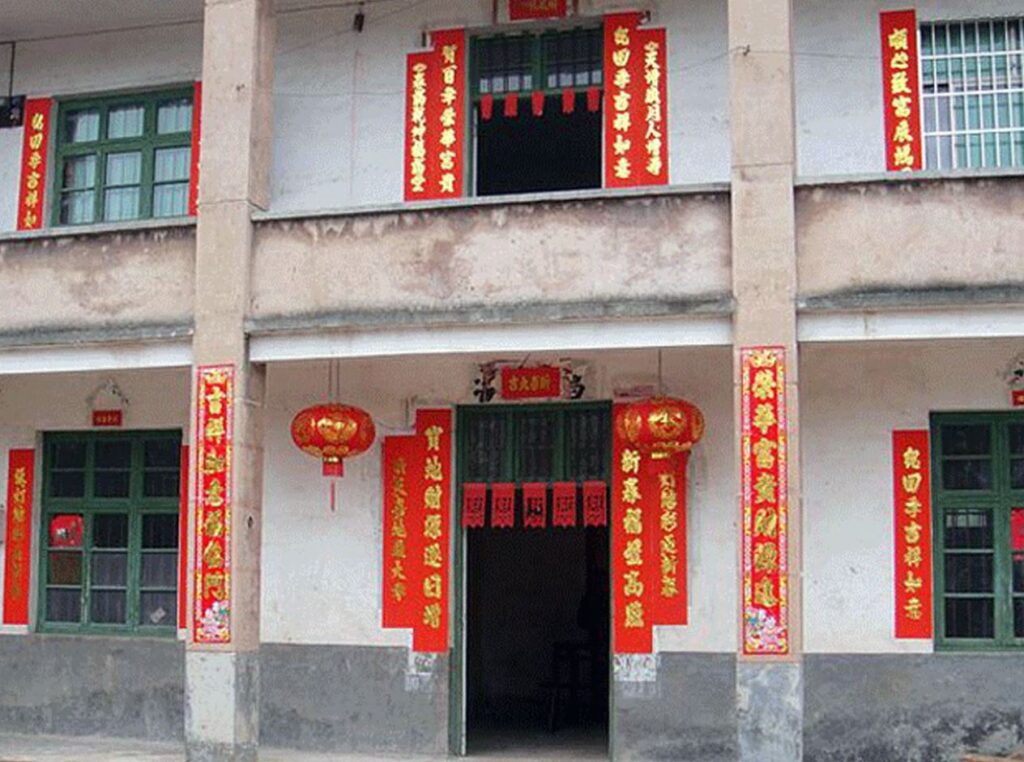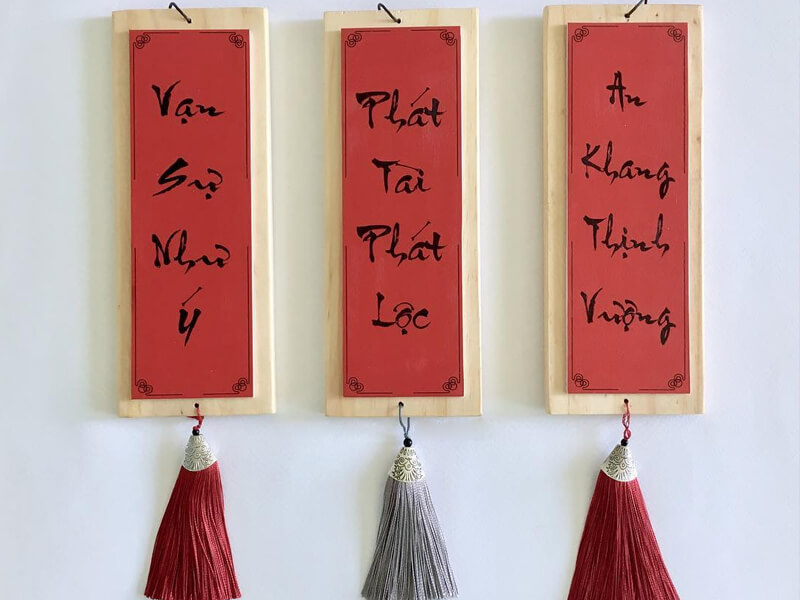
One of the most common and eye-catching decorations during the Tet holiday in Vietnam is the red couplet, also known as cau doi or li xi. A red couplet consists of two parallel sentences written in Chinese characters or Vietnamese script, usually on red paper, that express good wishes for the new year. The sentences are often poetic, rhyming, and balanced in terms of structure and meaning. The red couplet is usually hung on the door, the wall, or the altar of the house, creating a festive and auspicious atmosphere.
The Origin
The origin of the red couplet can be traced back to the Chinese tradition of using peach wood to ward off evil spirits. According to legend, there was a monster named Nian that would attack villages every new year. The people discovered that Nian was afraid of the color red, fire, and loud noises. Therefore, they hung red banners and lanterns, lit firecrackers, and banged drums to scare Nian away. Later, the red banners were replaced by red paper with auspicious words written on them, and the tradition of the red couplet was born.

The meaning
The red couplet is not only a decoration, but also a reflection of the culture and values of the Vietnamese people. It shows their respect for their ancestors, their gratitude for the past year, their hope for the future, and their love for their family and friends. The red couplet also conveys the wisdom and creativity of the Vietnamese language, as it uses various literary devices, such as metaphors, allusions, puns, and homophones, to express complex and profound meanings in a concise and elegant way.
Some of the common themes and words that appear in the red couplet are:
- Luck and prosperity: Phúc (happiness), Lộc (wealth), Thọ (longevity), Tài (talent), Phát (prosper), Đắc (achieve), etc.
- Spring and renewal: Xuân (spring), Mới (new), Đổi (change), Sáng (bright), Tươi (fresh), Nở (bloom), etc.
- Peace and harmony: An (peace), Bình (calm), Hòa (harmony), Duyên (grace), Nghĩa (righteousness), Hiếu (filial piety), etc.

Some examples of the red couplet are:
- An khang thịnh vượng – Vạn sự như ý (Peace and prosperity – Everything as you wish)
- Xuân sang đổi mới – Phúc lộc đầy nhà (Spring brings renewal – Happiness and wealth fill the house)
- Tài đức vĩnh hằng – Thọ trường an nhiên (Talent and virtue last forever – Longevity and peace are natural)
The red couplet of Tet holiday in Vietnam is a symbol of luck and prosperity that enhances the beauty and joy of the celebration. It is a part of the rich and diverse heritage of Vietnamese literature and culture, and a contribution to the world of paper art and tradition.
Vietnam warmly welcomes you to enjoy Vietnamese cuisine and culture and to make your trip go smoothly as the very first step, make your plan into reality by obtaining a Vietnam visa at https://www.vietnam-evisa.org.